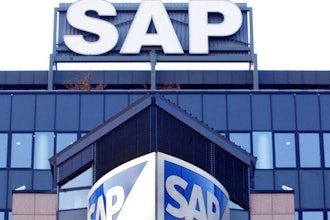This is the year when cloud deployment will dominate industry news. Signs point to it, from industry trends to forecasts from analysts, media pundits and software experts. Cloud deployment is the must-have starting place for new technologies. Plus, it provides the agility that is so necessary to remain competitive. It’s simply the logical deployment choice for today’s manufacturing landscape. Let’s look closer at the top twelve driving factors converging around this topic, making 2017 the year for cloud deployment.
1. Overcoming Reluctance
In the early years of new millennium, cloud deployment was shrouded in misconceptions and haunted by myths that were, at times, more emotion-based than fact-based. Change is frequently worrisome to an organization, causing resistance and uncertainty. Users were often reluctant to give up functionality that was deeply entrenched in their processes. Veteran IT directors were proud of the highly modified systems they had built. Understandably so. Those early objections, though, are giving way to a better understanding of the benefits and acknowledgment that change is critical to growth. Acceptance follows.
2. Early Adopters Have Paved the Way
Early adopters have been very enthusiastic and eager to share results. They have managed pilot programs, migrated some non-critical edge apps to the cloud and implemented large scale moves to cloud computing for the entire enterprise. Those early achievers have produced excellent case studies and best-practice models that can be emulated. The data is hard to dismiss.
3. Growth Focused
Cloud deployment is a logical choice for growth-focused companies. The fast, easy deployment, over months, not years, helps the manufacturer add divisions, build new plants, acquire or merge with other organizations, forge partnerships, expand in new countries, add new product lines, and expand into new revenue streams — all without the hassle of purchasing and setting up servers, hardware and security.
4. Flexible Scale and Scope
Expansion is remarkably easy with cloud solutions that have scalability and flexibility built into the solution. Open architecture, built on the language of the internet, also supports the ability to extend capabilities, integrate legacy solutions, and incorporate new disruptive technologies that may still be in design stage.
5. Go Digital
Cloud deployment also makes it possible for a manufacturer to modernize the entire IT system, without incurring large capital expenses. Modernizing IT capabilities makes it possible to take advantage of new technologies, such as digitalization, data science, and the Internet of Things (IoT). Embedding smart sensors in products and machines to capture conditional data has especially led to an uptick in cloud adoption. The vast storage required to manage such a system is hard to achieve without cloud deployment. The warehouse for on premise servers would need to be massive. Cloud storage is easily expanded, as needed, if needed.
6. Elasticity and Capacity
Many components of digitalization, such as predictive analytics, IoT connectivity, and tracking of data from sensors, requires the elasticity and vast storage capacity that cloud solutions offer. Manufacturers are finding, that as they are incorporating the disruptive technologies of digitalization, it also makes sense to move their core solutions to the cloud at the same time. One supports the other.
7. The Complete Network
Manufacturers know that competing in today’s global economy requires a smart supply network and integrated connection of vendors, suppliers, partners and contractors. Cloud solutions make that visibility practical and easy to manage with far more agility than an on premise solution.
8. Acquisitions and Divestitures
Agility is needed to respond to changing structure. Manufacturers simply cannot go through a two-year implementation process to integrate the new organization to an existing on premise ERP. Cloud solutions require months for implementation, supporting rapid change.
9. Demand for an Enhanced User Experience
Expectations from the millennial workforce is also a factor compelling manufacturers to turn to the SaaS model. Because cloud solutions are continually updated by the provider, they tend to feature modern user interfaces and consumer-like usability.
10. Advanced Security
Cybersecurity is a pressing issue for many manufacturers. They prefer to let experts who can focus major resources on security assume this critical responsibility. Manufacturers can focus on their core competencies and turn over security to providers who specialize in the field.
11. The Lingering Skills Gap
Manufacturers have had trouble recruiting right-skilled IT technicians. This reinforces the logic of letting an outside resource handle the day-to-day management of servers, back-ups and upgrades. An individual manufacturer likely will be challenged to recruit and retain the same level of expertise, especially if the facility is located outside of a technology hub, that a major cloud provider can supply.
12. Limited Cash Flow
Many manufacturers today are cash-strapped as they steadily work through replacing or upgrading in-plant equipment that has been pushed past its prime. The recent recession taxed cash reserves causing manufacturers to delay investment in equipment. This makes Cloud’s subscription model and lower total cost of ownership (TCO) attractive to cash-strapped manufacturers.
Cloud is here to stay. It is the future for manufacturing and it goes hand in hand with the disruptive technologies sweeping through the industry. Now, as manufacturers face the technology revolution and redefine practices, it makes sense to include cloud deployment in their overall IT strategies. Moving to the cloud provides an opportunity to take a fresh look at systems and processes, from the ground up.
Lisa Pope is Infor Senior Vice President of Global Strategy & Sales for Infor CloudSuite.























